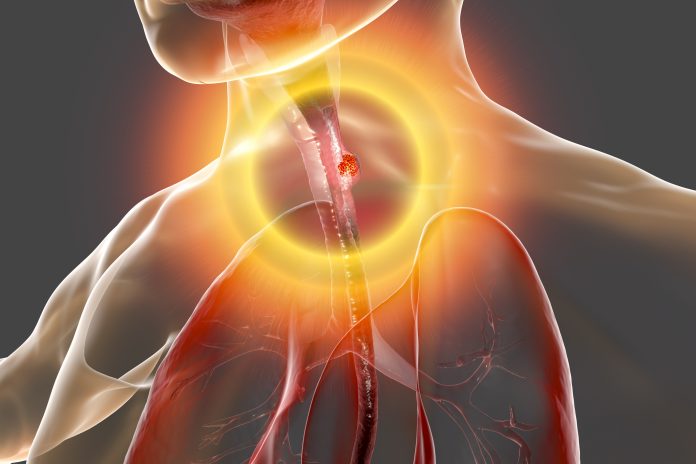
U.K. researchers have shown that CDKN2A mutations that occur early in the course of Barrett’s esophagus (BE) may protect patients from progressing to esophageal carcinoma (EAC) whereas late mutations are linked to poor cancer outcomes.
“Our study introduces the intriguing concept that the functional consequences of alterations in cancer genes may change during the evolution of disease, from preventing cancer transformation in the premalignant setting to favoring a more aggressive disease at later stages,” wrote Piyali Ganguli, PhD, from the Francis Crick Institute in London, and co-author of the paper published in Nature Cancer.
“We often assume that mutations in cancer genes are bad news, but that’s not the whole story,” said lead researcher Francesca Ciccarelli, PhD, professor of cancer genomics at Queen Mary University of London’s Barts Cancer Institute and principal group leader at the Francis Crick Institute, where the experimental work in this study took place. “The context is crucial. These results support a paradigm shift in how we think about the effect of mutations in cancer.”
The researchers explain that loss of function mutations in the tumor suppressor gene CDKN2A have been reported in at least 35 different tumor types across 12 organ systems and frequently occur in BE and EAC. However, the role of CDKN2A in BE and EAC evolution is unclear.
To investigate, Ciccarelli and team compared genomic, transcriptomic, and survival data from patients with EAC and patients with BE who did and did not progress to cancer.
They identified CDKN2A loss of function mutations in 25% of 1032 samples taken from patients with EAC, in 44% of samples from 257 individuals with BE that progressed to high-grade dysplasia or EAC, and in 62% of 99 samples from patients with BE that did not progress to high-grade dysplasia or EAC.
The more frequent occurrence of mutations among individuals with BE relative to those with EAC suggests “that EAC does not always originate from a CDKN2A-damaged BE,” the researchers remarked.
In addition, just 15 (23%) of 66 matched EAC–BE pairs with CDKN2A loss of function in BE or EAC had either identical or clonally related CDKN2A alterations, which the authors say confirms that CDKN2A loss of function “is not required for precancer to cancer transition.”
Another gene involved in the progression of BE to EAC is TP53. Loss of TP53 strongly drives the progression of disease from BE to EAC—all BE patients with TP53 loss progressed to cancer irrespective of CDKN2A status. By comparison, the odds of cancer progression in BEs with CDKN2A loss of function and non-mutated TP53 was lower than those of BEs with both wild-type genes (0.58 and 0.72, respectively). This suggests that an early occurrence of CDKN2A loss of function in BE may reduce the likelihood of EAC initiation.
Further analysis showed that potentially cancerous cells that lost both CDKN2A and TP53 were weakened and unable to compete with other cells around them, preventing cancer from taking root. In contrast, if cancer cells lose CDKN2A after the disease has had time to develop, it promotes a more aggressive disease and worse outcomes for patients.
The findings could have significant implications for how we assess cancer risk.
“People with Barrett’s esophagus have higher chances of developing esophageal cancer and currently they are regularly monitored using procedures that are invasive for the patient and expensive for the NHS. We now know that Barrett’s patients with CDKN2A alterations are less likely to develop cancer,” Ciccarelli told Inside Precision Medicine.
In the paper, the study authors discussed the use of CDKN2A loss of function as a potential biomarker for EAC. They wrote: “It is tempting to speculate that the tumor-preventive role of early CDKN2A [loss of function] could be further developed as a marker of favorable prognosis in nondysplastic BE. Endoscopic surveillance of BE is an integral component of the current EAC prevention paradigm, but the rate of progression to EAC is only 0.54/100 patient–years. Identifying BE cases with a lower risk of progression could substantially improve patient management, decreasing the burden of endoscopy for patients who have low chances to develop cancer.”
Ciccarelli and colleagues are now planning further studies to confirm the differing impacts of CDKN2A loss of function mutations with time in BE and EAC.
“We are already working to understand why an early CDKN2A loss reduces the chances of acquiring additional cancer-driver alterations for example in TP53 thus reducing the chances of cancer initiation,” she said.









![Best Weight Loss Supplements [2022-23] New Reports!](https://technologytangle.com/wp-content/uploads/2022/12/p1-1170962-1670840878.png)




